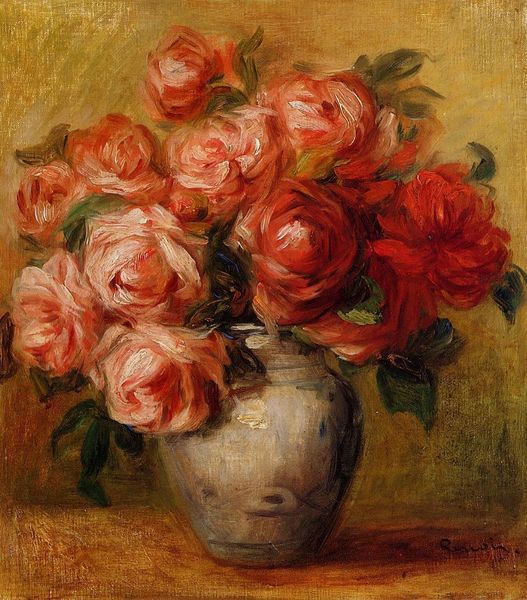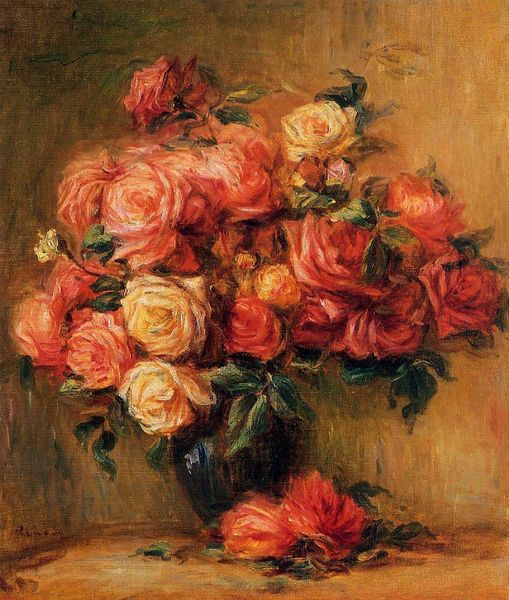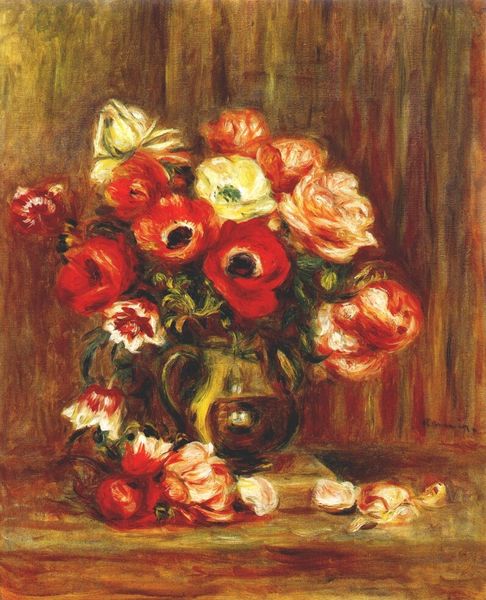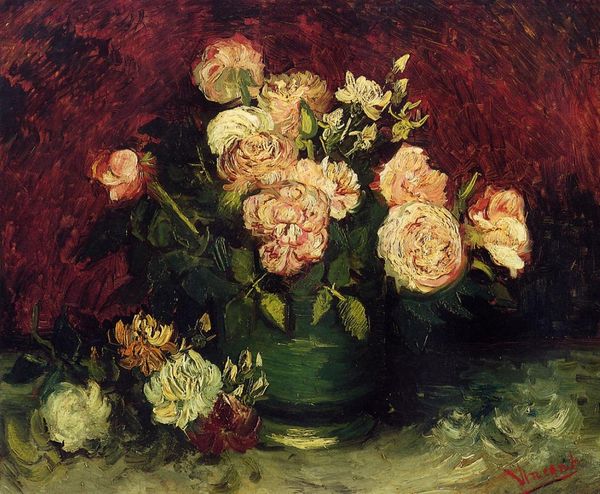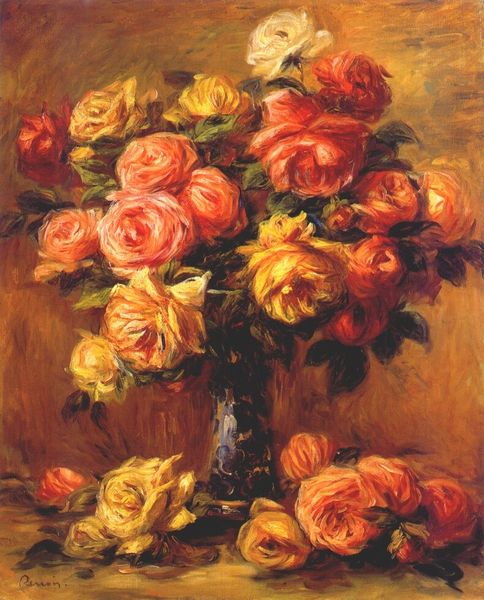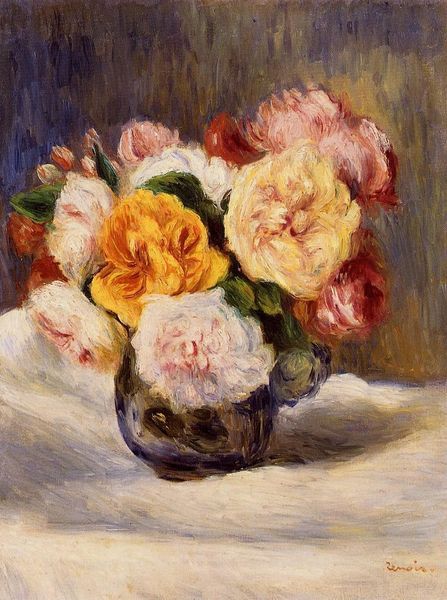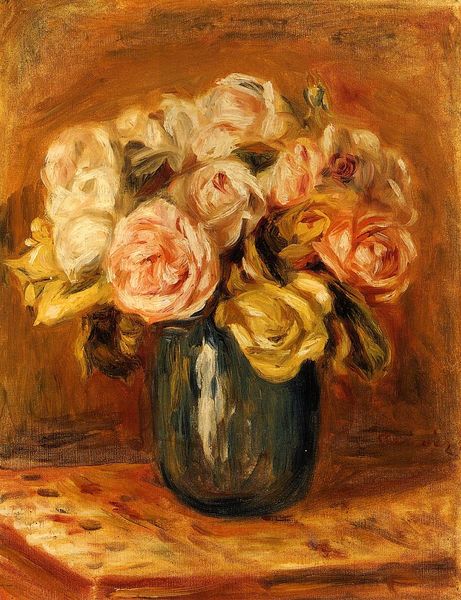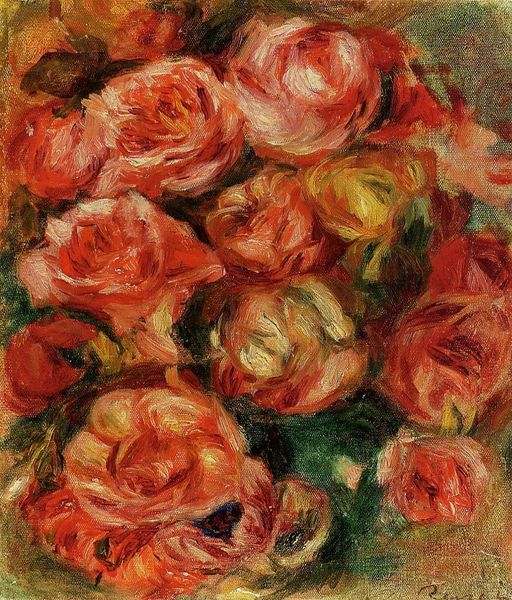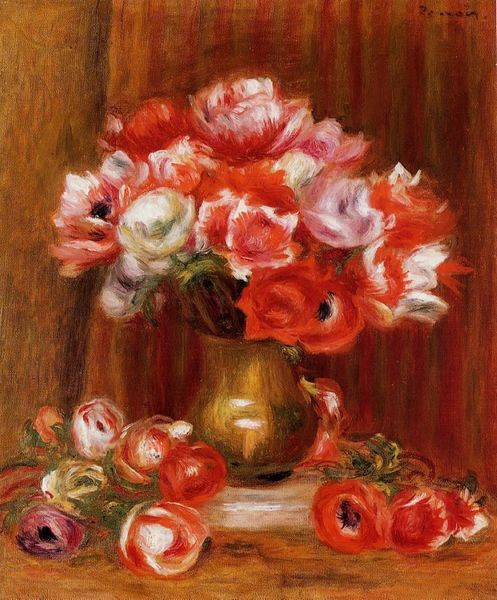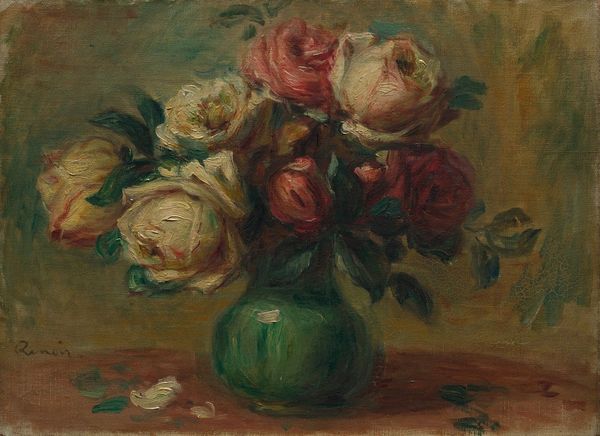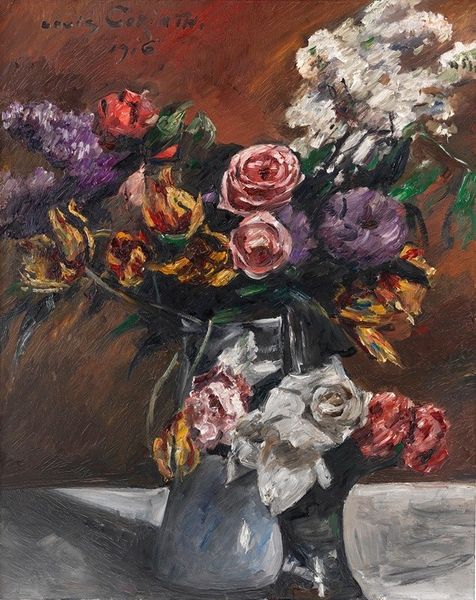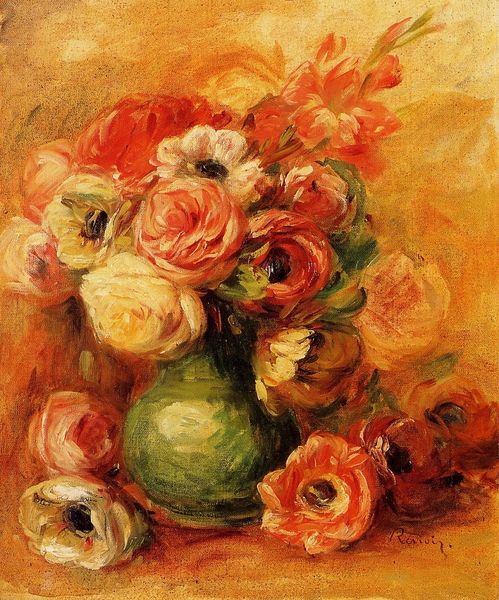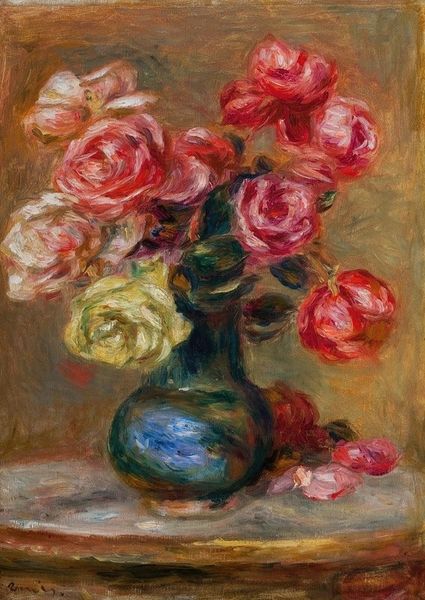
Copyright: Public domain
Editor: Today, we’re looking at Henri Fantin-Latour's "Roses," an oil painting from 1883. The arrangement is so delicate, almost ephemeral. What immediately strikes me is the contrast between the fully bloomed white roses and that single, deeper yellow rose near the base. What do you see in this piece? Curator: The first element that commands attention is, undeniably, the structural interplay between light and form. Note how the diffused light, rendered through subtle gradations of color, models the petals. Observe the tension arising from the contrast between the crisp, precise delineation of the vase and the soft, almost dissolving, forms of the blooms. Do you perceive how this juxtaposition directs our gaze and shapes our understanding? Editor: I do notice that now. The vase is very clearly defined, especially compared to the blurry roses. But why do you think he did that? Was it intentional? Curator: Indeed, the deliberate ambiguity serves a critical function. Consider the rose itself: an emblem of beauty, yet inherently transient. Fantin-Latour utilizes the blurred edges to invoke a sense of fleeting existence, capturing the essence of beauty rather than its literal representation. Furthermore, the placement of the blooms relative to one another and to the implied light source, form a structured harmony. Editor: That’s fascinating! So, it's not just a pretty picture of flowers; it's more about capturing a feeling or an idea? Curator: Precisely. The artist uses visual components to construct an evocative experience. Note that single rose cast off to the side – it pulls the eye down and across, as if offering an unspoken suggestion that the flower’s beauty can never really be trapped. Through close reading, we gain insight into its intrinsic significance. Editor: That really gives me a new appreciation for the painting, focusing less on the subject and more on how it's portrayed. Curator: It is in understanding how line, shape, color, and form coalesce, transcending mere representation, that art reveals its profundity.
Comments
No comments
Be the first to comment and join the conversation on the ultimate creative platform.
